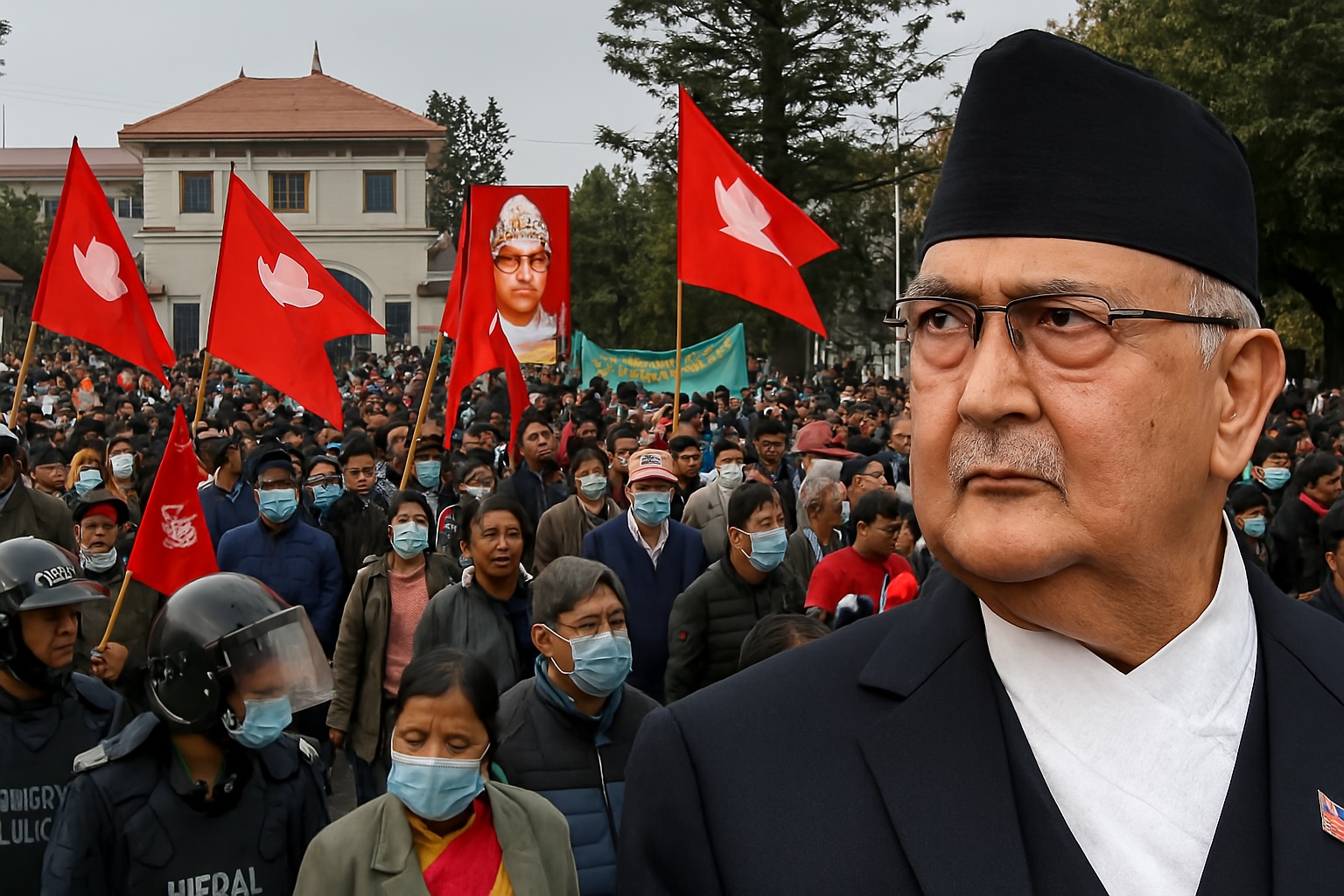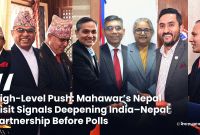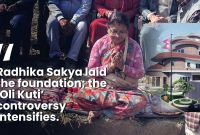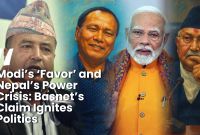Everyone on the Streets Against Oli: Royals, Republicans, Maoists, Even His Own Party

Kathmandu, April 10 — Prime Minister KP Sharma Oli appears utterly incapable of managing public dissatisfaction or providing effective leadership. The streets of the capital are flooded with protests—not from just one group or over one issue, but a nationwide uproar spanning royalists, republicans, opposition parties, and even members of his own ruling UML party. The government seems besieged from all sides.
The royalist Rastriya Prajatantra Party (RPP) has staged violent demonstrations demanding the restoration of the monarchy, leading to the arrest of senior leaders including Rabindra Mishra. The RPP has since launched a series of escalating protests, claiming the system has failed and that regime change is the only solution.
Meanwhile, Durga Prasai, an independent pro-monarchy activist, remains underground yet continues to provoke public sentiment against the government through video messages.
Ironically, the ruling UML party itself is on the streets. From local wards to major cities, UML cadres are holding rallies under the guise of public campaigns. That the ruling party is protesting its own government while Prime Minister Oli sits quietly inside Singha Durbar is a stunning indictment of political dysfunction.
It’s not just the royalists. Republicans are marching too. The Maoist Centre, Unified Socialist, and Nepal Socialist Party have held joint protests in Bhadrakali. Other groups demanding the abolition of federalism, victims of cooperative fraud, teachers, doctors, energy consumers, and ethnic organizations have all taken to the streets with their own agendas.
Teachers are rallying for the implementation of the School Education Act. Postgraduate medical students are protesting at Maitighar Mandala, demanding that the government honor past salary agreements. Cooperative and microfinance victims have intensified their campaigns, furious that previous government promises remain unfulfilled.
The situation borders on the absurd. The Rastriya Swatantra Party (RSP), part of the current ruling alliance, is also protesting the government over the arrest of its leader Rabi Lamichhane in a fraud case. When a party in power rallies against the very government it supports, it signals deep institutional rot. Yet Prime Minister Oli remains silent, as though everything is normal. Such indifference is nothing short of betrayal to the people.
From scrap metal workers pushed out by the Kathmandu metropolis to angry citizens in Koshi Province over the naming controversy—everywhere there is frustration. There’s no visible corner of the country where confidence in the government remains intact.
The Root of the Crisis: Oli's Arrogance
At the core of this collapse lies KP Oli’s authoritarianism, lack of dialogue, and utter insensitivity to public grievances. His repeated disregard for public expectations, refusal to deescalate tensions, and negligence of dissent within his own party have thrown the nation into a whirlpool of despair.
The people are exhausted—by fiery speeches, destructive nationalism, and never-ending cycles of protest with no accountability.
KP Sharma Oli still considers himself untouchable. But teachers, doctors, scrap workers, electricity consumers, royalists, and republicans alike have a unified message for the Prime Minister: “Enough is enough.”
The real question now is—will Prime Minister Oli cling to power? Or will he finally hear the cries of the people and make a dignified exit?
Time is running out. This storm won’t pass in silence. If he wants to save his seat, listening to the rising voices of protest is no longer optional—it is his last obligation. If not, this blaze of unrest will consume him and his legacy entirely.
Background of the Protests
Public dissatisfaction against the government has been intensifying over the past few months. Backed by numerical strength in parliament, Prime Minister KP Sharma Oli's leadership has repeatedly ignored public sentiment. As a result, the pressure is now mounting not just from the opposition, but also from within his own party.
Consequently, these protests are not merely calls for a change in leadership but appear to be the beginning of a broader dissent against the current system and a demand for alternative governance.
Political Movements: Ruling and Opposition in Unison
1. Rastriya Prajatantra Party (RPP) – Demand for Restoration of Monarchy
On Chaitra 15, RPP organized a massive protest in Tinkune that turned violent. After the arrest of Senior Vice President Rabindra Mishra and General Secretary Dhawal Shumsher, the party announced a phased protest demanding unconditional release and judicial investigation.
2. CPN-UML – Internal Party Dissent
The ruling UML, under Oli’s leadership, has been holding protests at ward, district, and city levels under its “Jara Abhiyan” campaign. Ironically, these demonstrations are indirectly targeted at Oli’s own government, criticizing its delays, insensitivity, and arrogance.
3. Republican Alliance (Maoist Centre, Unified Socialist, Nepal Socialist Party)
On Chaitra 15, they held a major rally at Bhrikutimandap, accusing the government of corruption, unemployment, and negligence toward national interest. Their core message: protecting the constitution requires structural change in governance.
4. Rastriya Swatantra Party (RSP) – Anger Over Ravi Lamichhane’s Case
RSP has launched a forceful protest, claiming their President Ravi Lamichhane has been framed in a cooperative fraud case.
5. Rastriya Janamorcha – Demand to Abolish Federalism
Since Chaitra 24, Rastriya Janamorcha has been holding Kathmandu-centered protests demanding the abolition of federalism.
6. Monarchist People's Movement Committee – Ultimatum and Threat of Mass Arrests
Led by coordinator Jagman Gurung, the committee has issued an ultimatum until Baisakh 21 to release leaders including Navaraj Subedi, warning of mass arrests if demands are not met.
7. Durga Prasai – Fugitive Yet Active
One of the leading figures behind the Tinkune protest, Prasai is currently on the run but continues to provoke action against the Oli government through video messages, accusing it of plotting against the nation and religion.
8. Prabhu Sah – Representing Scrap Traders
Following a protest on Chaitra 24, the Aam Aadmi Party, led by Sah, has announced plans to encircle Singha Durbar on Jestha 15.
9. Teachers’ Protest – Demand for Implementation of School Education Act
Teachers are using peaceful protests with placards, torches, poems, and symbolic gestures to voice their demands.
10. Postgraduate Doctors – Demand for Salary Implementation
Since Chaitra 21, postgraduate medical students have been holding sit-ins at Maitighar, demanding implementation of a previously agreed monthly salary of Rs. 48,000.
11. Cooperative and Microfinance Victims – Demand to Enforce Past Agreements
Since Chaitra 17, these protestors, representing citizens defrauded by cooperatives and microfinance institutions, have resumed protests due to unfulfilled agreements.
12. Pro-Kulman Ghising Protest
On Chaitra 25, supporters protested at Maitighar following the controversial dismissal of Ghising from the Nepal Electricity Authority.
13. Scrap Traders – Against Kathmandu Metropolitan Decisions
Under the slogan “Let us work to survive!”, scrap business owners have staged protests against restrictions imposed by the metropolis, expressing frustration from the entrepreneurial community.
14. Protest Against Mukumlung Cable Car Project
Groups dissatisfied with the Koshi Province government’s decision have organized protests in Kathmandu.
15. Federation of Journalists – Protesting Journalist Suresh Rajak’s Death
Following Rajak’s death, journalists have been protesting, demanding action against those responsible, defending press freedom, and honoring his legacy.




![From Kathmandu to the World: How Excel Students Are Winning Big [Admission Open]](https://nepalaaja.com/img/70194/medium/excel-college-info-eng-nep-2342.jpg)
